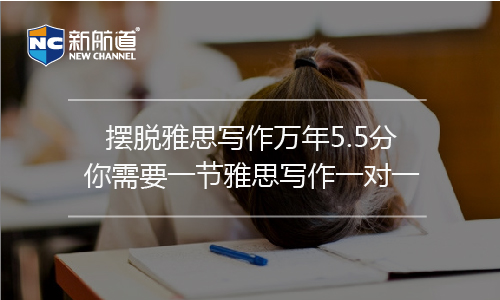剑11雅思阅读Test3Passage1原文+题目+答案解析
上一篇文章是:剑11雅思阅读Test1Passage1解析 本片文章新航道 雅思培训 班继续给大家分享:剑11雅思阅读Test3Passage1原文+答案解析。想要获取真题的同学,请戳:剑桥雅思真题11PDF+音频下载 。
剑桥雅思阅读11原文(test3)
READING PASSAGE 1
You should spend about 20 minutes on Questions 1-13, which are based on Reading Passage 1 below.
THE STORY OF SILK
The history of the world’s most luxurious fabric, from ancient China to the present day
Silk is a fine, smooth material produced from the cocoons — soft protective shells — that are made by mulberry silkworms (insect larvae). Legend has it that it was Lei Tzu, wife of the Yellow Emperor, ruler of China in about 3000 BC, who discovered silkworms. One account of the story goes that as she was taking a walk in her husband’s gardens, she discovered that silkworms were responsible for the destruction of several mulberry trees. She collected a number of cocoons and sat down to have a rest. It just so happened that while she was sipping some tea, one of the cocoons that she had collected landed in the hot tea and started to unravel into a fine thread. Lei Tzu found that she could wind this thread around her fingers. Subsequently, she persuaded her husband to allow her to rear silkworms on a grove of mulberry trees. She also devised a special reel to draw the fibres from the cocoon into a single thread so that they would be strong enough to be woven into fabric. While it is unknown just how much of this is true, it is certainly known that silk cultivation has existed in China for several millennia.
Originally, silkworm farming was solely restricted to women, and it was they who were responsible for the growing, harvesting and weaving. Silk quickly grew into a symbol of status, and originally, only royalty were entitled to have clothes made of silk. The rules were gradually relaxed over the years until finally during the Qing Dynasty (1644-1911 AD), even peasants, the lowest caste, were also entitled to wear silk. Sometime during the Han Dynasty (206 BC-220 AD), silk was so prized that it was also used as a unit of currency. Government officials were paid their salary in silk, and farmers paid their taxes in grain and silk. Silk was also used as diplomatic gifts by the emperor. Fishing lines, bowstrings, musical instruments and paper were all made using silk. The earliest indication of silk paper being used was discovered in the tomb of a noble who is estimated to have died around 168 AD.

Demand for this exotic fabric eventually created the lucrative trade route now known as the Silk Road, taking silk westward and bringing gold, silver and wool to the East. It was named the Silk Road after its most precious commodity, which was considered to be worth more than gold. The Silk Road stretched over 6,000 kilometres from Eastern China to the Mediterranean Sea, following the Great Wall of China, climbing the Pamir mountain range, crossing modern-day Afghanistan and going on to the Middle East, with a major trading market in Damascus. From there, the merchandise was shipped across the Mediterranean Sea. Few merchants travelled the entire route; goods were handled mostly by a series of middlemen.
With the mulberry silkworm being native to China, the country was the world’s sole producer of silk for many hundreds of years. The secret of silk-making eventually reached the rest of the world via the Byzantine Empire, which ruled over the Mediterranean region of southern Europe, North Africa and the Middle East during the period 330-1453 AD. According to another legend, monks working for the Byzantine emperor Justinian smuggled silkworm eggs to Constantinople (Istanbul in modern-day Turkey) in 550 AD, concealed inside hollow bamboo walking canes. The Byzantines were as secretive as the Chinese, however, and for many centuries the weaving and trading of silk fabric was a strict imperial monopoly. Then in the seventh century, the Arabs conquered Persia, capturing their magnificent silks in the process. Silk production thus spread through Africa, Sicily and Spain as the Arabs swept through these lands. Andalusia in southern Spain was Europe’s main silk-producing centre in the tenth century. By the thirteenth century, however, Italy had become Europe’s leader in silk production and export. Venetian merchants traded extensively in silk and encouraged silk growers to settle in Italy. Even now, silk processed in the province of Como in northern Italy enjoys an esteemed reputation.
The nineteenth century and industrialisation saw the downfall of the European silk industry. Cheaper Japanese silk, trade in which was greatly facilitated by the opening of the Suez Canal, was one of the many factors driving the trend. Then in the twentieth century, new manmade fibres, such as nylon, started to be used in what had traditionally been silk products, such as stockings and parachutes. The two world wars, which interrupted the supply of raw material from Japan, also stifled the European silk industry. After the Second World War, Japan’s silk production was restored, with improved production and quality of raw silk. Japan was to remain the world’s biggest producer of raw silk, and practically the only major exporter of raw silk, until the 1970s. However, in more recent decades, China has gradually recaptured its position as the world’s biggest producer and exporter of raw silk and silk yarn. Today, around 125,000 metric tons of silk are produced in the world, and almost two thirds of that production takes place in China.
Questions 1-9
Complete the notes below.
Choose ONE WORD ONLY from the passage for each answer.
Write your answers in boxes 1-9 on your answer sheet.
THE STORY OF SILK
Early silk production in China
Around 3000 BC, according to legend:
- silkworm cocoon fell into emperor’s wife’s 1 __________
- emperor’s wife invented a 2 __________ to pull out silk fibres
Only 3 __________ were allowed to produce silk
Only 4 __________ were allowed to wear silk
Silk used as a form of 5 __________
- e.g. farmers’ taxes consisted partly of silk
Silk used for many purposes
- e.g. evidence found of 6 __________ made from silk around 168 AD
Silk reaches rest of world
Merchants use Silk Road to take silk westward and bring back 7 __________ and precious metals
550 AD: 8 __________ hide silkworm eggs in canes and take them to Constantinople
Silk production spreads across Middle East and Europe
20th century: 9 __________ and other manmade fibres cause decline in silk production
Questions 10-13
Do the following statements agree with the information in Reading Passage 1?
In boxes 10-13 on your answer sheet, write
TRUE if the statement agrees with the information
FALSE if the statement contradicts the information
NOT GIVEN if there is no information on this
10 Gold was the most valuable material transported along the Silk Road.
11 Most tradesmen only went along certain sections of the Silk Road.
12 The Byzantines spread the practice of silk production across the West.
13 Silk yarn makes up the majority of silk currently exported from China.
剑桥雅思11Test3阅读解析Passage 1
Question 1
答案: tea
关键词: 3000 BC, cocoon, fell into, emperor's wife
定位原文: 第1段第5句“It just so happened that... ” 这些蚕茧中的一粒掉进了热茶中并开始松散成为一根细丝。
解题思路: “3000BC”和“皇帝的妻子”都很好定位,在段的第二句中便可看到,但却偏偏没有“掉进”这个信息,直到读者看到第五句中的landed in这个同义表述才能恍然大悟,答案为tea。
【附解析】
Question 2
答案: reel
关键词: emperor's wife, invented, pull out silk fibres
定位原文: 第1段第8句“She also devised a special reel to draw... ”她还设计发明了一种特殊的卷轴来将蚕茧中的纤维纺成丝线。
解题思路: 此题的定位距离上一道题不远,仍是皇帝妻子所做的事。题干说“皇帝的妻子发明了一个 _____ 来拽出丝绸纤维”,读者只需回到原文找到devised这个对invented进行同义表述的单词,即不难发现答案为reel。
Question 3
答案: women
关键词: only, allowed to produce
定位原文: 第2段第1句“Originally, silkworm farming …” 起初,桑蚕业完全是只由女性来进行的,她们要负责种植、收获和纺织。
解题思路:此题基本是考査考生对于solely表示only这个意思的认知。题干说“只有被允许生产丝绸”,根据语法还可推知此空格内需填写名词的复数形式。定位到原文的solely restricted to即可得到答案women。
Question 4
答案: royalty
关键词: only, allowed to wear
对应原文: 第2段第2句“Silk quickly grew into a symbol of status, and originally, only …” 成为社会地位的象征,起先只有皇室才能穿。
解题思路: 此题结构与上一题极其相似,题干说“只有______被允许穿着丝绸”。这次题千里的only一词倒是原词重现在文中,不过却考査考生是否认识be entitled to与be allowed to的同义替换,或者考生也可通过题干中wear与文中clothes的对应确定答案为royalty。
Question 5
答案: currency
关键词: used, a form of, farmers' taxes
定位原文: 第2段第4、5句“Sometime during …” 到汉朝的某个时段,珍贵到被当做一种货币。
解题思路: 此题的题干本身给出信息不多,“丝绸被用作一种形式的______”;考生也可能并不熟 悉a unit of与a form of的同义替换。但好在下一句的例子提到了更多细节:例如,农民交税的一部分就是丝绸。利用“农民交税”这个信息可以更顺利地进行定位,答案为currency货币。
【附解析】
Question 6
答案: paper
关键词: 168AD,made from
定位原文: 第2段最后1句“The earliest indication of … ”人类最早使用丝质纸的证据发现于一位贵族的墓中。
解题思路: 此题中最明显的定位词非168AD莫属。题干说“大约在公元168年发现了用丝绸制作的的证据”,因此考生需要在定位句中寻找某种以丝绸为材质的物品。对比原文indication(此处意即证据) of silk paper可知答案为paper。
Question 7
答案: wool
关键词: Silk Road, westward, precious metals
定位原文: 第3段第1句“Demand for this exotic fabric eventually …” 最终催生了“丝绸之路”的贸易路线,且向西输送丝绸而向东则运来金、银和毛料。
解题思路: 此题题干说“商人们利用丝绸之路向西运送丝绸并运______回来和贵重金属”。定位十分容易,对比原文可知precious metal即文中的gold 和silver,于是答案为另外的物品wool。
Question 8
答案: monks
关键词: hide, canes, Constantinople
定位原文: 第4段前第3句“According to another legend, monks…” 根据另一个传说版本,是为拜占庭皇帝工作的和尚们走私偷运了蚕卵。
解题思路: 此题依然可以利用题干中的数字和大写轻松定位。题干说 “在公元550年,_____把蚕卵藏在手杖里带到了君士坦丁堡”,可以推知此题答案必然身份为人,不过考生需分辨清楚发出smuggled (走私)这个动作的人是一些为拜占庭皇帝工作的僧侣而非在句子中离smuggled这个动词更近的皇帝本人,答案为monks。
Question 9
答案: nylon
关键词: 20th century, manmade fibres, decline
定位原文: 第5段的第3句。“Then in the twentieth century, new ……” 接下来在20世纪里,新型人造纤维材料,例如尼龙,开始应用在传统上一直使用丝绸的产品中,例如长筒袜和降落伞。
解题思路: 此题的定位需先找到“20世纪”这一信息。题干说“ _____和其他人造纤维材料造成了丝绸生产的衰落”,可以推知答案必然为某种具体的人造纤维材料。対比原文只有一种具体人造材料被提及,答案为nylon。
Question 10
答案: False
关键词: Gold, most valuable material, Silk Road
定位原文: 第3段第2句“It was named the Silk Road after... ” 之所以命名为丝绸之路,是因为运输了最贵重的商品,比黄金价值更高的“丝绸”。
解题思路: 原文意思不难理解,丝绸之路之所以名为“丝绸”之路,是以其最有价值的货品(即丝绸)来命名的,还有定语从句进一步澄清“丝绸被认为比黄金价值更高”,与题干信息相悖。
Question 11
答案: True
关键词: Most tradesmen, certain sections of the Silk Road
定位原文: 第3段最后一句“Few merchants travelled …” 基本没有商人走完全程,货物传递都靠很多中间人。
解题思路: 只需认识merchants这个可以用来替换tradesmen的词汇即可顺利定位,而原文内容说很少有商人会走完整条路线,分号后更是换了种方式再表达一遍:商品大多是由一系列中间经手入来传递交接的,与题干内容一致。
Question 12
答案: False
关键词: Byzantines, spread, across the West
定位原文: 第4段第4句“The Byzantines were as secretive…”
解题思路: 文章中说“拜占庭人和中国人一样守秘不宣,在很多个世纪里丝绸料子的纺织和贸易都受到帝国严格的把控垄断”,也就是说拜占庭人并没有积极地把丝绸生产的做法传播出去,而是保守了秘密,与题干信息相反。注意:本段第二句中曾经提及,丝绸制作的秘密确实是经由拜占庭帝国而传播到世界上其他国家去的,但这句表述并不能等同于题干中的“拜占庭人将丝绸生产的做法传遍西方”,因为后者是在说他们出于主动的意愿去传播这种方法,而前者则是陈述事实:无论如何,最终丝绸的生产方法确实是经由拜占庭传播到各地的。二者不能混为一谈。
Question 13
答案: Not Given
关键词: Silk yarn, majority, exported from China
定位原文: 第5段最后两句“However, in more recent decades, China…”
解题思路: 原文只说中国在近几十年成为世界的生丝和丝线的生产者和出口国,其产量几乎占全球丝绸产量的三分之二,并没有明确提及在这些产品的构成中,丝线是否占到大多数。
更多真题解析,请:剑桥雅思11阅读解析 剑桥雅思10阅读真题解析 剑9阅读真题解析 剑8阅读真题解析 剑桥雅思7阅读解析







